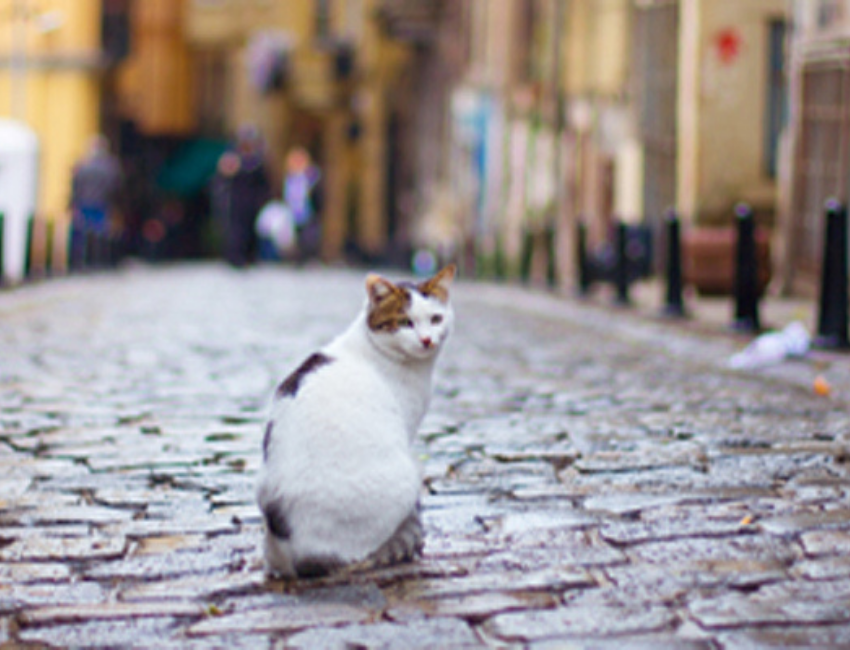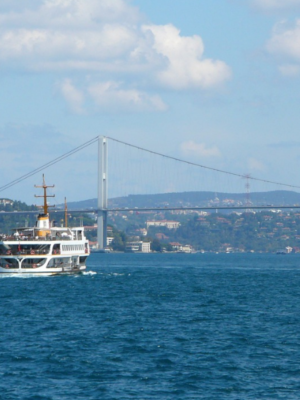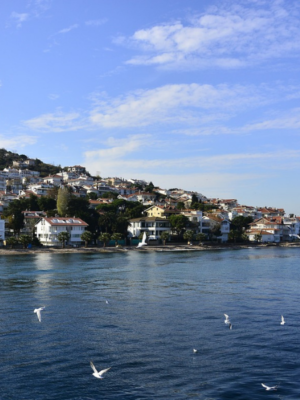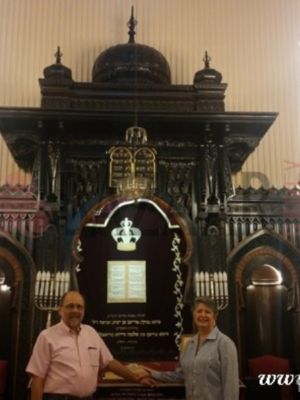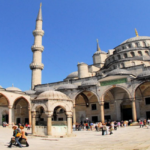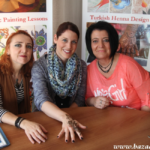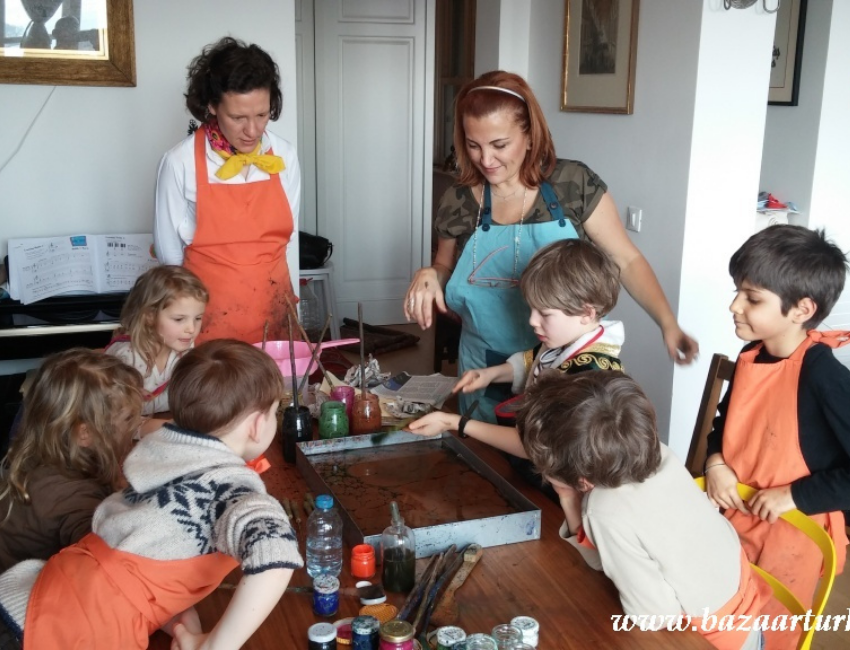SPECIAL ISTANBUL by Barbara Nadel
Anyone who lives or works in a great city like Istanbul has their own special and favourite places within it. And although I don’t reside in the city myself, I am a frequent visitor by virtue of being the author of six crime novels set in Istanbul. These books, all of which feature Istanbul police Inspector Cetin Ikmen and his colleague, Mehmet Suleyman, also I hope, cast some light into those not always well-known districts of the city I have myself
enjoyed – my own special Istanbul places.
The old western districts of Fener and Balat feature in both my first Ikmen book ‘Belshazzar’s Daughter’ and my most recent book ‘Petrified’. Formerly strongholds of the Greek and Jewish communities respectively, Fener and
Balat still retain their churches and synagogues which continue to provide links with the past for those who either attend them or just live within these districts.Personally, I like to start any sojourn of these districts from the Golden Horn side and the curious church of St Stephen of the Bulgars which lies on a island between Balat Vapur Iskelesi Caddesi and Mursel Pasa Caddesi. Neo-Gothic in design, this structure, built in 1871 for the Bulgarian residents of the city, is made entirely from cast iron which was originally shipped over in segments from Vienna. Heading inland into Balat, Istanbul’s oldest synagogue, the beautifully restored Ahrida, is at Kukcucesme Sokak, No9. Founded by Macedonian Jews in 1453, it was taken over by the Sephardic Jews of Spain and Portugal who arrived as refugees from those countries in 1492. Their descendants still pray here.
In addition to the above, Fener is also home to the Greek Orthodox Patriarchate which is on Sadrazam Ali Pasa Caddesi, the Church of the Panaghia Mouchliotissa (St Mary of the Mongols) on Tevkii Caddesi, which is
dedicated to a Byzantine princess who was given in marriage to the Mongol Khan, as well as to a profusion of sometimes ivy-encrusted Greek style houses. However, for me, the most intriguing place in this area is the
Armenian church of Surp Hiresdagabet (Holy Angels). Dating back originally to the Byzantine era, this church was taken over by the Armenian community in the 17th century and restored to its present form in 1835. Having said
that, the most important part of this church, the sacred spring underneath, is entirely of Byzantine origin. This place fascinates me because it, or rather the sacred spring, is the source of a miracle that is said to be bestowed upon just one congregant on 16th September every year.The halt, the lame and the dying be they Muslim, Jewish or Christian come from all over the country in the hope that they will be chosen. But whatever happens, this strange and ancient ceremony represents an extremely touching example of religious tolerance and harmony which has always been a characteristic of these picturesque western districts.
My favourite mosque, which is off Prof Siddik Sami Omar Caddesi and just behind Istanbul University, is the Suleymaniye. Designed by the great Ottoman architect Koca Mimar Sinan for the empire’s most famous and
enlightened sultan, Suleyman the Magnificent, this is a centre of social welfare as well as a place of worship. Completed in 1557, the Suleymaniye complex is made up of a mosque, a religious school, a caravanserei, a hamam, an asylum for the mentally ill and a soup kitchen which could feed over 1,000 Muslim, Jewish and Christian subjects of the sultan every day. I love it because, as well as representing a level of social concern almost
unheard of in Europe at that time, the Suleymaniye complex is also beautiful and perfectly proportioned. Though grand, this mosque is light – the dome seems to float of its own accord – and brilliant in its design. Sinan the
architect was a genius who constructed this building to withstand and survive Istanbul’s periodic earthquakes – which is has done admirably.
In common I imagine with most residents of and visitors to Istanbul, I love Beyoglu and have my own special way of getting up into the district from the Galata Bridge. Instead of taking the Tunel funicular railway from lower
Galata up to Tunel Square, I walk the steep streets of Karakoy. That way I can take in the old Ottoman banking district on Voyvoda Caddesi, running up from which are the weird Kamondo steps which combine all the virtues of a staircase and an art deco sculpture into their extremely odd design.Climbing higher I then come to the fourteenth century Galata Tower. Built by the Genoese, this distinctive building has been used variously as a prison, a fire watching tower and an astronomical observatory.
Once on Istiklal Caddesi there is so much to see I am spoilt for choice. One of my favourite places north of the street is the Balik Pazari (Fish Market) which is a covered passage lined with stalls selling almost every sea and
river creature imaginable. The characteristic tabby Istanbul cat can be seen everywhere around here, weaving in and out between the fish stalls and tiny shops selling nuts, herbs and tea. Although always shooed away by the
eagle-eyed vendors, the cats nevertheless remain a constant in this lively commercial scene. About halfway down the Balik Pazari, on the right, what looks like a door into a cupboard leads into the courtyard of the Armenian
church of the Three Altars. Rising from a calm and almost silent marble courtyard this church, when open, provides a rare glimpse of an Orthodox Christian tradition that is neither Slavic nor Greek. Further north still, in front of Tepebasi Park on Mesrutiyet Caddesi is the Buyuk Londra Hotel.Built in 1892, the same year as the more famous Pera Palas Hotel, the Londra was once patronised by Ernest Hemingway when, in 1922, he was covering the
Turkish War of Independence for a Canadian newspaper. Until very recently,little had changed at the Londra since that time, which is why I love it.Ancient gramophones, bird cages, sheet music and a lot of eccentricity abound. As a writer I can only treasure such a place.
South of Istiklal Caddesi is the twisty windy district of Cukurcuma. I generally approach this charming area of antique and textile shops by walking down beside the Church of St Mary Draperis and on to the wonderfully
named, and steep, Tomtom Kaptan Caddesi. Here amid shops selling everything from top hats to carved wooden doors, I can indulge my love for sorting through mountains of treasures, clothing, jewellery and junk. People are
friendly and laid back here and I have spent many a happy hour just looking at things and imagining who once owned a particular object, jewel or dress.
At least some of the action in every one of my books takes place in the Beyoglu area. In addition, I have also ‘used’ the Princes Islands, Bebek,Anadolu Kavagi, Yildiz Park and many other locations in and around the city
too. I love them all and would urge everyone to see these places as well as those favourites I have detailed above. The truth is that what I’ve described here is just the tip of the Istanbul ‘iceberg’. But then what else could a city built across two continents be if not infinitely variable? END.
Hope this is alright.let me know what you think.My new book,’Deadly Web’ is published by Headline in English in January 2005.
Barbara Nadel


